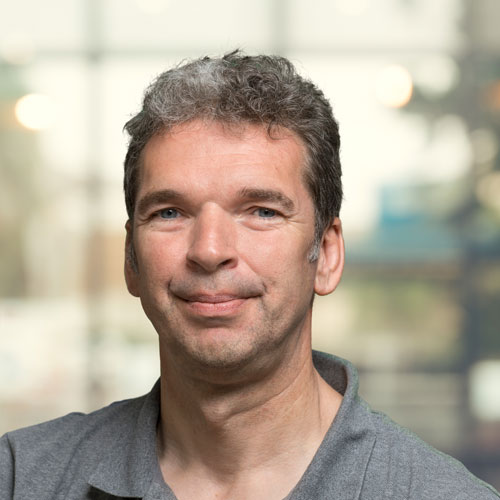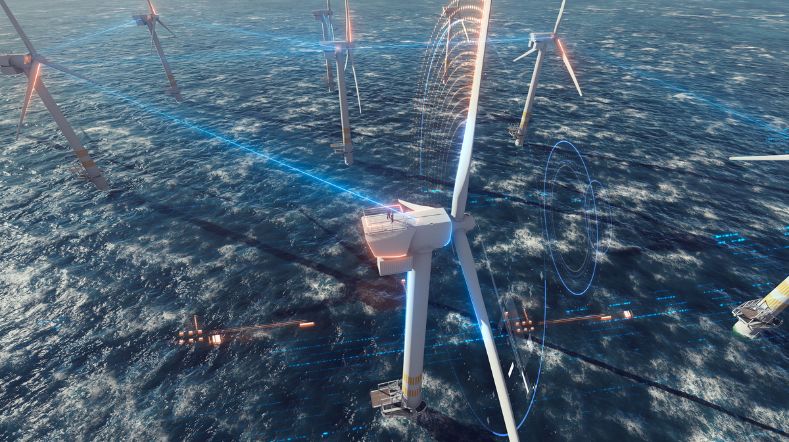
SWITCH tackles the energy issues of the future
The supply of energy generated from solar and wind is growing rapidly, as demand increases rapidly due to electric vehicles, heat pumps, and the electrification of industry. That success is taking a toll on our electricity grid. Yet, weighting the grid with additional cables is a time-consuming and costly solution. That is why TNO, together with partners, is pushing for flexibility, storage techniques, integration with gaseous energy carriers (such as hydrogen), and heat, so as to better match fluctuating supply with demand and optimise grid utilisation.
We are investigating how we can shape that optimisation, together with Wageningen University & Research/ACRRES, at the SWITCH field lab in Lelystad, which opened at the end of March. As part of this pilot project, we are linking wind turbines, solar panels, an electrolyser for creating hydrogen, and a battery system together. A system forming part of the small-scale energy infrastructure of the future.
Combining energy and environmental expertise
“This is where everything comes together," says André Faaij, Director of Science and Technology at TNO Energy and Materials Transition and part-time professor of Energy Systems Analysis at Utrecht University. "Our experts can optimise combinations of technologies in terms of use, cost, and spatial integration. Thanks to the collaboration with WUR, we are bringing together expertise in energy and environment. Together, we have long been looking at how solar energy can be generated in rural areas without affecting the landscape, water, and soil quality. SWITCH was launched to test and optimise all kinds of combinations of generation, storage, and conversion technologies for different situations. We expect to add more and more components over time.”
Local generation and use
Infrastructure is the most expensive part of the energy transition. So it pays to devise smart solutions to generate and use energy as locally as possible. The power then does not need to travel as far across the grid, if at all. These solutions include creating and storing hydrogen, especially for use in industry. When it comes to homes, André says hydrogen is less efficient as a replacement for natural gas.
“Technically speaking, that is not a problem. With some minor modifications perhaps, the gas grid is suitable for hydrogen distribution in principle. But hydrogen production and transportation also involve conversion losses. When converting sustainably generated electricity into hydrogen through electrolysis, you lose about 30% energy. The hydrogen is then pressurised and transported through a pipeline to homes, where it is converted into heat. One kWh of electricity from wind turbines in the North Sea, for example, provides half a kWh of heat in the home. That same kWh can supply around 4 kWh of heat to a home using a heat pump.”
Another interesting option for storing electricity off the grid is to turn it into heat, especially on sunny summer days. You can run heat pumps optimally in summer and store the heat in aquifers underground. The cool water can then be used for cooling in summer and or it can be kept as heat for the winter. And that in turn reduces peak demand for natural gas, which is what we currently use, for heating. A real win-win. The SWITCH lab is looking at how thermal storage can be applied in different situations, for example.

“Our experts can optimise combinations of technologies in use, cost and spatial integration.”
Making steel industry more sustainable
But things are rather different in industry. Hydrogen is needed as a fuel for high-temperature processes and as a raw material for chemicals. There are numerous applications for hydrogen that are currently covered by natural gas. There are plenty of opportunities for the steel industry, which currently emits a great deal of CO2. Replacing polluting coke with hydrogen makes for a clean steel plant, without making steel more expensive in the long run. Hydrogen can also be stored for longer periods (e.g. in underground salt caverns) and used for flexible peak power during periods of low solar and wind availability. New and smarter technology is also being developed and tested for this, such as electrolysers that can also function as fuel cells.
Electrifying farms
"One exciting topic is electrifying the agricultural sector," says André. "Farms offer a lot of space, a lot of roof area for solar panels and therefore opportunities to take pressure off the electricity grid. Not to mention combining it with wind energy. By generating, storing, and using energy locally, you don’t need to rely on the regional grid so much. With thermal storage, you flatten the curve for peak electricity and heat demand, because heat pumps are needed much less in winter. Tractors and harvesters are huge machines that use a lot of diesel, but can be made electric and recharged on site. It is these kinds of applications that optimise energy supply and make it more flexible, thanks to the combined knowledge of WUR and TNO."
Great potential
The agricultural sector can be electrified in many ways, making a substantial contribution to the energy transition given the size of the industry. Intelligent greenhouses – something which the Netherlands is definitely a world player – can be made to produce energy. Biomass, which is when agricultural waste streams and products from biorefining grass are fermented, also offers considerable opportunities in the Netherlands.
According to André, 10% of the energy supply can be covered by biomass within the country. And with the huge potential of solar and wind energy, the agricultural sector can be a much larger net producer of energy. "By combining our knowledge of smart farming, electrification, robotisation, precision agriculture, and more, there is still so much more that can be achieved. We are working with WUR towards climate-neutral and environmentally friendly agriculture that can also make a considerable contribution to the energy transition."
Get inspired
The energy system of the future


Smart networks for a future-proof energy system


TNO and Jungle AI collaborate to detect cyberattack on wind turbine and improve detection capabilities


Wind energy webinars

Webinar: System transformation in offshore renewable supply



